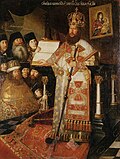| No. | Primate | Portrait | Reign | Notes |
|---|
| 1 | Stefan
Simeon Yavorsky
(1658–1722) |  | 1721 | 1722 | President of the Most Holy Synod . Stefan refused to sign the Synod's documents, did not attend its meetings. Peter I apparently appointed him only to give a certain sanction to the new institution. |
| 2 | Theophan
Prokopovich
(1681–1736) |  | 1722 | 1736 | Vice president of the Synod and its prime member since 15 July 1726 |
| Seat vacant 1736–1742 |
| 3 | Joseph (ru)
Volchansky |  | 1 September 1742 | 10 June 1745 | Archbishop of Moscow and Vladimir |
| 4 | Plato I (ru)
Pavel Malinovsky |  | 5 April 1748 | 14 June 1754 | Archbishop of Moscow and Sevsk |
| Hilarion (ru)
Grigorovich
(1696–1759) |  | 1754–1757 | Coadjutor |
| 5 | Timothy (ru)
Tikhon Shcherbatsky
(1698–1767) |  | 22 October 1757 | 3 January 1767 | Metropolitan of Moscow and Kaluga |
| 6 | Ambrosius
Andrey Sertis-Kamensky
(1708–1771) | 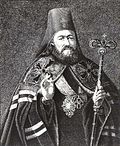 | 18 January 1768 | 16 September 1771 | Archbishop of Moscow. Murdered during the Moscow plague riot of 1771 |
| Samoel (ru) |  | 1771–1775 | Coadjutor |
| 7 | Plato II
Levshin
(1737–1812) |  | 20 January 1775 | 13 June 1812 | Metropolitan of Moscow and Kolomna since 1787 |
| Seat vacant 1812–1818 |
| 8 | Augustine (ru)
Alexey Vinogradsky
(1766–1819) | 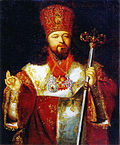 | 19 February 1818 | 15 March 1819 | Archbishop of Moscow and Kolomna |
| 9 | Seraphim (ru)
Stefan Glagolevsky
(1763–1843) |  | 15 March 1819 | 19 June 1821 | Metropolitan of Moscow and Kolomna |
| 10 | St. Philaret
Vasily Drozdov
(1783–1867) |  | 15 July 1821 | 2 December 1867 | Archbishop of Moscow and Kolomna, metropolitan since 1826 |
| 11 | St. Innocent
Ivan Veniaminov
(1797–1879) |  | 5 January 1868 | 12 April 1879 | |
| 12 | Macarius I
Mikhail Bulgakov
(1816–1882) | 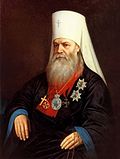 | 20 April 1879 | 21 June 1882 | |
| 13 | Joannicius (ru)
Ivan Rudnev
(1826–1900) |  | 27 June 1882 | 17 November 1891 | |
| 14 | Leontius (ru)
Ivan Lebedinsky
(1822–1893) |  | 17 November 1891 | 13 August 1893 | |
| 15 | Sergius (ru)
Nikolay Lyapidevsky
(1820–1898) |  | 21 August 1893 | 23 February 1898 | |
| 16 | St. Vladimir
Vasily Bogoyavlensky
(1848–1918) | 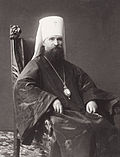 | 5 March 1898 | 6 December 1912 | |
| 17 | St. Macarius II
Mikhail Nevsky
(1835–1926) |  | 8 December 1912 | 2 April 1917 | |
|


























